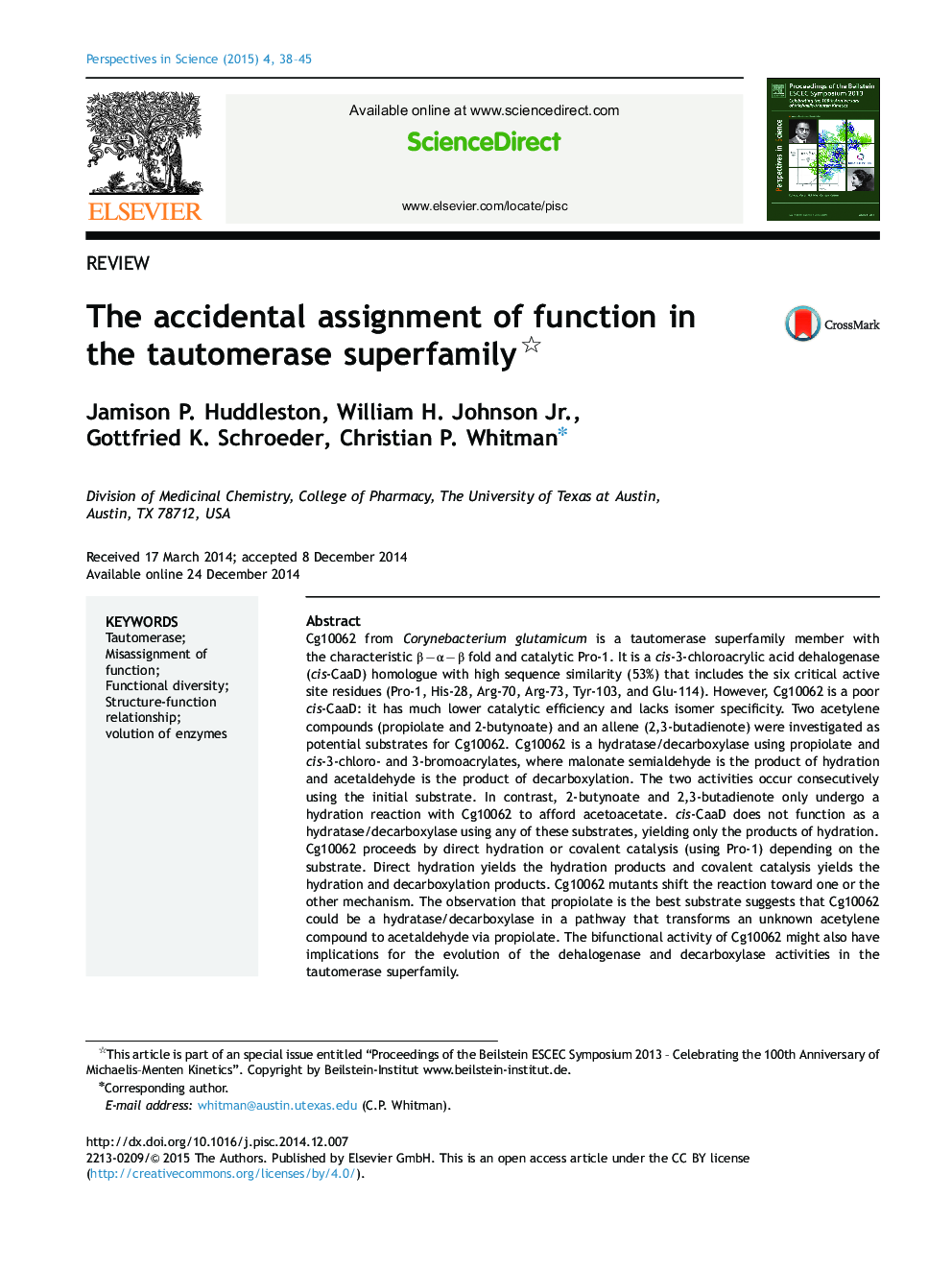| Article ID | Journal | Published Year | Pages | File Type |
|---|---|---|---|---|
| 2061684 | Perspectives in Science | 2015 | 8 Pages |
Cg10062 from Corynebacterium glutamicum is a tautomerase superfamily member with the characteristic β−α−β fold and catalytic Pro-1. It is a cis-3-chloroacrylic acid dehalogenase (cis-CaaD) homologue with high sequence similarity (53%) that includes the six critical active site residues (Pro-1, His-28, Arg-70, Arg-73, Tyr-103, and Glu-114). However, Cg10062 is a poor cis-CaaD: it has much lower catalytic efficiency and lacks isomer specificity. Two acetylene compounds (propiolate and 2-butynoate) and an allene (2,3-butadienote) were investigated as potential substrates for Cg10062. Cg10062 is a hydratase/decarboxylase using propiolate and cis-3-chloro- and 3-bromoacrylates, where malonate semialdehyde is the product of hydration and acetaldehyde is the product of decarboxylation. The two activities occur consecutively using the initial substrate. In contrast, 2-butynoate and 2,3-butadienote only undergo a hydration reaction with Cg10062 to afford acetoacetate. cis-CaaD does not function as a hydratase/decarboxylase using any of these substrates, yielding only the products of hydration. Cg10062 proceeds by direct hydration or covalent catalysis (using Pro-1) depending on the substrate. Direct hydration yields the hydration products and covalent catalysis yields the hydration and decarboxylation products. Cg10062 mutants shift the reaction toward one or the other mechanism. The observation that propiolate is the best substrate suggests that Cg10062 could be a hydratase/decarboxylase in a pathway that transforms an unknown acetylene compound to acetaldehyde via propiolate. The bifunctional activity of Cg10062 might also have implications for the evolution of the dehalogenase and decarboxylase activities in the tautomerase superfamily.
